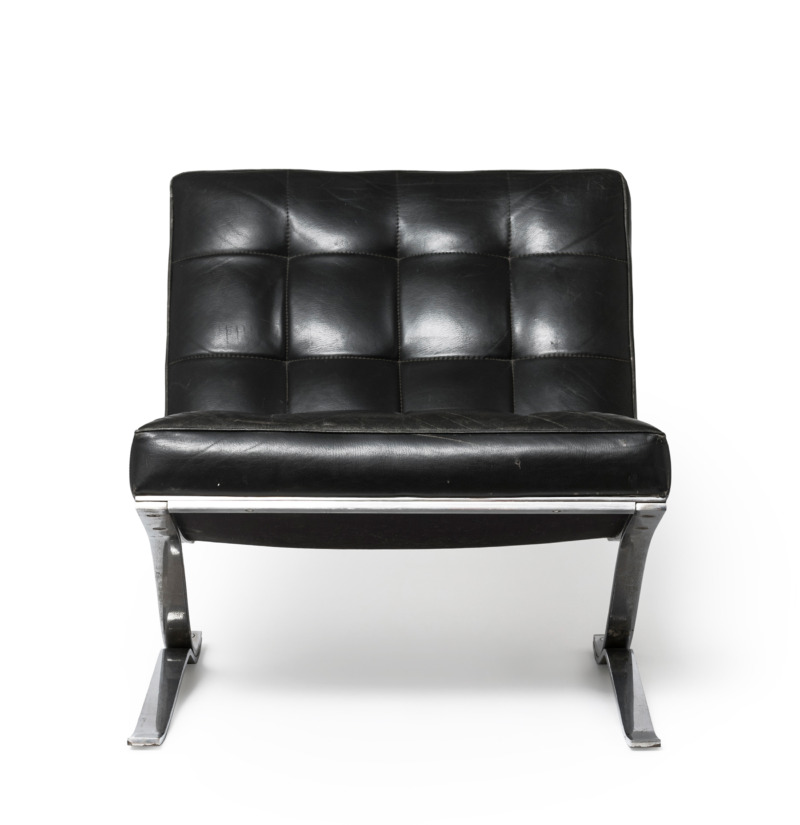The toast rack is made of a square frame, which is based on four feet.
The wavy wire gives space to place toasted bread slices. On one side, a long piece of wire is inclined like a swan’s neck over the construction and forms a carrying handle with a conical piece of wood. The slim, anodized wire construction appears airy and light due to its simple design.
The 1950s in West Germany were – after the shortage of goods and the emergency products of the immediate post-war period – characterised by the return of economic prosperity, the so-called Wirtschaftswunder. Industrially manufactured and thus inexpensive products determined the vast range of goods and the market was flooded with electrical and auxiliary equipment to facilitate even the smallest everyday tasks.
As an expression of a longing for an inviting, representative home transcending all social classes, the gold-coloured toast bread rack fits perfectly into this period. Although many are familiar with the problem of the appropriate storage of freshly toasted, sweaty bread, the function of the toast rack seems to be of secondary importance compared to its role as a decorative household element. It thus represents a counterpart to the programme of the »Gute Form« – developed by the Swiss Werkbund in the 1950s – according to which objects should not attract attention through fashionable peculiarities, but should be appropriate to the material, of high quality, durable and above all functional.
The toast rack can be seen in the permanent exhibition of the Werkbundarchiv – Museum der Dinge.

